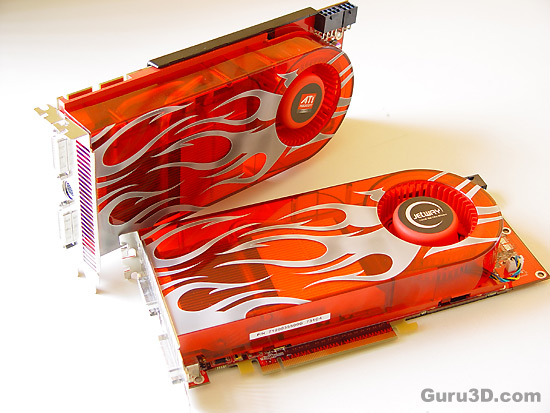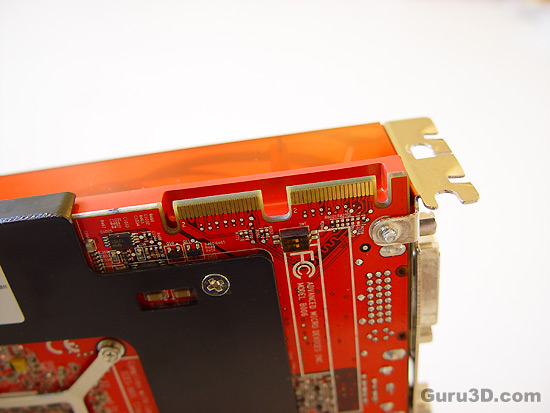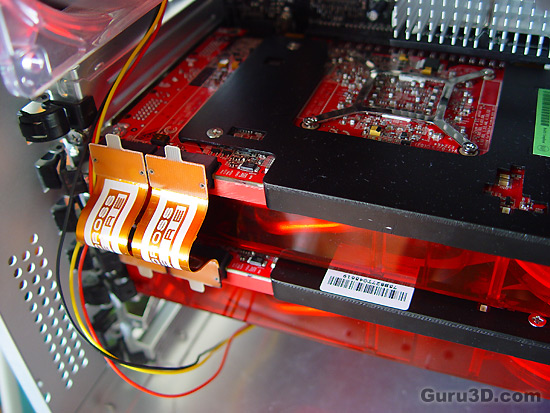Page 3 - Crossfire
Crossfire
So what we'll do today also is a Crossfire session. Crossfire means that you can hook up two graphics cards in your system, connect them and double up your 3D rendering power.

Most of you know this, but the previous generation products, except the X1950 Pro and the low-end segment, had to use the dreaded Y-Cable to be able to run Crossfire. Ever since the Catalyst 6.5 drivers you'll be able to hook up similar Radeon X1000 series graphics cards from the low and mid-range segment up-to the X1600 without the need for a master card AND you do not need the Y-Cable. Just plug these cards preferably into a (2x) x16 PCI-Express lane mainboard and it should work. It however was not optimal as you'd be REALLY pushing the PCI-Express bus.
The old situationThe high-end series required that Y-cable (great name, because often I asked "Why" ... Why is that cable needed?) ATI used it to composite images between the two cards. ATI is producing a digital image from the DVI output of the slave card and then sends it to the large connector (DMS-59) on the master board. The master board will, on its terms, prepare its image and then send off both to a compositing engine that is processed on the master board. The master card is responsible for "fusion" of the images between the two boards and that can be done in a number of varieties. So that is why you needed a primary card, you have two cards rendering images and then there's is a compositing engine needed which is located on the master card.

On the example photo above you can see the new CrossFire connectors, you'll need to connect both.
The new situation
ATI basically natively incorporated the compositing engine that in the old situation was located seperately on thr mastercard. Now it's embedded into the GPU. This is now effective with all Series 2600 and 2900 products. So there's no need anymore for a master/slave card.
So, to run the cards in a CrossFire configuration, all you have to do is connect them via a pair of ribbon cables, very similar to NVIDIA's SLI bridge. These cables, for the time being, will actually be bundled with the video cards and not the motherboards, because there are a plethora of Intel 975 and P965 boards already available that are CrossFire compatible, that don't ship with the appropriate connector cables.
So ATI/AMD will be including that CrossFire connector with each card moving forward from now on. Some advantages over the old situation:
- plug and play setup
- no master cards needed anymore
- integrated compositing engine
- dual-link DVI inter connect
- resolutions up-to 2560x2048 supported

Software-wise this is pretty much all you need to do to; Enable CrossFire.
Our test session today will be done on an Intel D975BXB mainboard; Intel 975 chipset. As you'll see in most scenarios Crossfire smokes with really good performance. Excessive; yep, but hey it can be done if you like to.

Crossfire - the way it's meant to be played ?
